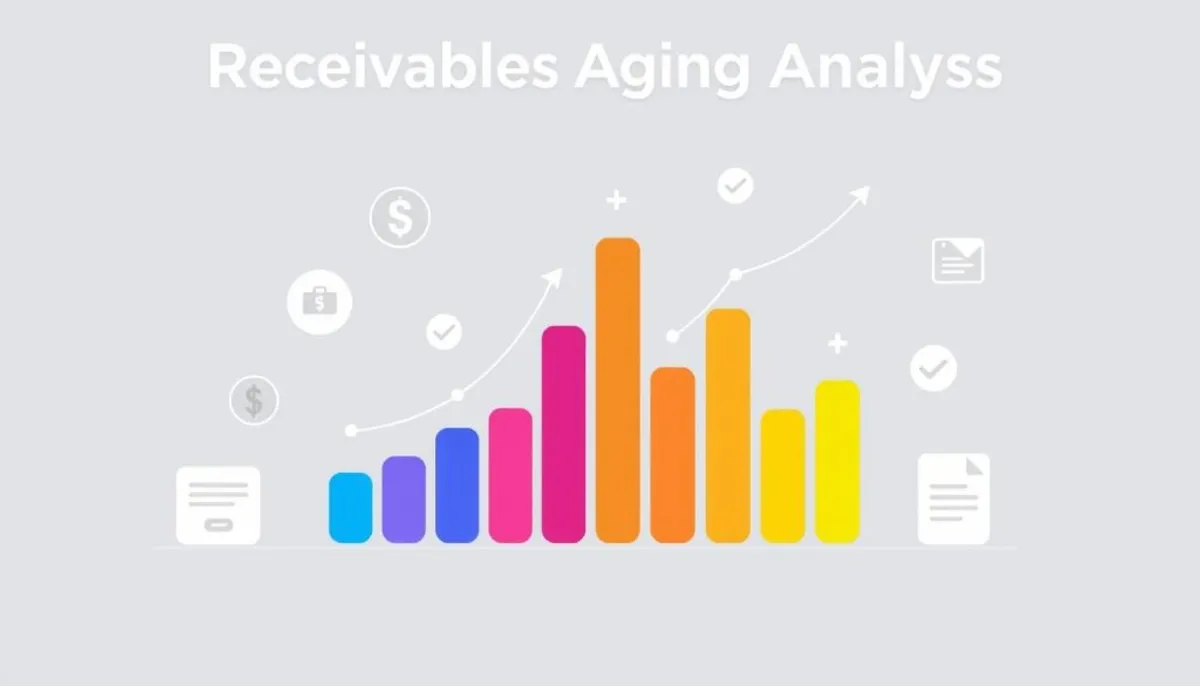Welcome to our comprehensive guide on account receivable management. In today’s fast-paced business world, mastering this crucial aspect of finance can make or break your company’s success. Effective accounts receivable management is the cornerstone of financial health, streamlining cash flow and fostering positive client relationships.
Let’s dive into the world of receivables management software and explore how accounts receivable automation can revolutionize your business operations. We’ll uncover strategies to optimize your processes, minimize risks, and boost your bottom line.

Did you know that businesses with top-notch account receivable management are better equipped to cover operational costs and invest in growth opportunities? It’s true! By implementing smart practices and leveraging technology, you can transform your receivables into a powerful tool for financial stability and expansion.
Throughout this guide, we’ll explore the ins and outs of account receivable management, from setting clear payment terms to utilizing cutting-edge software solutions. Get ready to unlock the secrets of efficient cash flow management and take your business to new heights!
Key Takeaways
- Effective account receivable management optimizes cash flow and supports business growth
- Accounts receivable automation tools reduce collection delays and prevent overlooked invoices
- Clear payment terms and deadlines are crucial for timely payments
- Online payment portals and diverse payment methods encourage prompt customer payments
- Key performance indicators (KPIs) help assess and improve receivables management performance
- Automated reminders and notifications streamline the collection process
- Regular credit checks and dispute management procedures minimize financial risks
Understanding Account Receivable Management Fundamentals
Account receivable management is a critical component of business operations. It entails monitoring funds owed to a company for goods or services rendered but unpaid. This process is essential for preserving cash flow and financial equilibrium.
Defining Accounts Receivable
Accounts receivable (AR) signify the sums owed to a business by its customers. They are listed as current assets on the balance sheet, anticipated for collection within a year. The system for managing accounts receivable tracks these outstanding payments, ensuring their timely collection and precise financial reporting.
Role in Business Financial Health
Effective AR management is pivotal for a company’s financial health. It influences cash flow, operational efficiency, and the accuracy of financial reports. The accounts receivable turnover ratio is a critical metric in this context. For example, Apple Inc. achieved an AR turnover ratio of 13.2 in Q4 2021, reflecting the rapidity with which customers settle their obligations.
Key Components of AR Management
The receivables collection process encompasses several critical elements:
- Invoice management
- Credit policies
- Account monitoring
- Collection strategies
Companies frequently employ an aging schedule to pinpoint late payments and implement timely interventions. They might also estimate uncollectible accounts using an “allowance for uncollectible accounts” to maintain realistic financial statements. By concentrating on these facets, enterprises can optimize their accounts receivable processing and enhance their financial outcomes.
Strategic Importance of Managing Receivables
Effective management of receivables is essential for a company’s financial well-being. It influences cash flow, supports growth, and reduces financial risks. Let’s dive into these critical aspects.
Impact on Cash Flow
Proper management of receivables significantly impacts a company’s cash flow. By optimizing processes, businesses can reduce the Days Sales Outstanding (DSO) to below 30 days. This metric is crucial for tracking revenue collection speed from clients. Implementing accounts receivable automation software can reduce cash collection time by up to 80%, enhancing efficiency.
Business Growth and Sustainability
Streamlined receivables management is key to business growth and sustainability. The Accounts Receivable Turnover Ratio indicates revenue collection speed. A higher ratio signals better cash flow and operational efficiency. Companies can use receivables aging analysis to spot trends and make informed decisions on credit policies and collection strategies.
Financial Risk Mitigation
Effective accounts receivable reporting is vital for financial risk mitigation. The Collection Effectiveness Index (CEI) measures revenue collection success. Monitoring this metric helps identify potential issues early. Establishing clear credit and collection policies is essential for managing credit risks and addressing overdue accounts proactively. Automated payment reminders and follow-ups can lower delinquency rates, enhancing financial stability.
| Metric | Description | Target |
|---|---|---|
| Days Sales Outstanding (DSO) | Average time to collect payments | Below 30 days |
| Average Days Delinquent (ADD) | Average days client payments are overdue | Minimize |
| Collection Effectiveness Index (CEI) | Percentage of accounts collected | Maximize |
ti3: Modern Solution for Receivables Management
In today’s fast-paced business world, efficient accounts receivable automation is crucial. ti3, a cutting-edge receivables management software, offers a comprehensive solution to streamline your financial processes.
Automated Payment Reminders
ti3 takes the hassle out of chasing payments. Its smart system sends timely reminders to clients, reducing late payments and improving cash flow. This feature saves time and maintains professional communication with customers.
Streamlined Collection Process
The software simplifies debt collection. It tracks overdue accounts, escalates issues when needed, and facilitates easy payment collection. This streamlined approach improves efficiency and reduces the workload on your finance team.
Client Relationship Preservation
ti3 balances effective collection with maintaining good client relationships. Its approach is less aggressive than traditional debt collection agencies, helping preserve valuable business connections while still achieving results.
| Feature | Benefit |
|---|---|
| Automated Reminders | Reduces late payments |
| Streamlined Collection | Improves efficiency |
| Relationship-Focused Approach | Preserves client connections |
By integrating ti3 into your financial processes, you can automate and simplify accounts receivable management, boost cash flow, and minimize late payments. This modern solution offers a cost-effective alternative to traditional methods, making it an invaluable tool for businesses of all sizes.
Essential Metrics and KPIs
Effective accounts receivable management hinges on tracking key metrics. These indicators offer insights into collection efficiency and financial health. Let’s examine essential metrics that businesses must monitor.

The Days Sales Outstanding (DSO) gauges the average time to collect payment post-sale. For instance, Inconspicuous Inc. averages 45.2 days to collect payments. A lower DSO signifies prompt collections and improved cash flow.
The Accounts Receivable Turnover Ratio (ART) is another critical metric. It measures the speed at which sales are converted into cash. Inconspicuous Inc. converted receivables into cash 11.2 times yearly in 2023. A higher ratio indicates efficient collections.
The Collections Effectiveness Index (CEI) reflects the efficiency of payment collections. In February, Inconspicuous Inc. achieved a CEI of 58.8%. This metric is linked to bad debt rates, aiding in assessing collection strategy performance.
| Metric | Formula | Example |
|---|---|---|
| DSO | (Accounts Receivable / Net Credit Sales) × Number of Days | 45.2 days |
| ART | Net Credit Sales / Average Accounts Receivable | 11.2 times/year |
| CEI | (Beginning AR + Monthly Credit Sales – Ending Total AR) / (Beginning AR + Monthly Credit Sales – Ending Current AR) × 100 | 58.8% |
Regularly conducting receivables aging analysis and generating accounts receivable reports is vital. It helps identify areas for improvement in collection strategies. By monitoring these metrics, businesses can refine their accounts receivable management, leading to enhanced financial performance.
Electronic Billing and Payment Systems
Electronic billing and payment systems are transforming accounts receivable management. These digital innovations streamline invoicing, enhance payment processing, and boost overall efficiency. Let’s explore the key components of these systems and their impact on business operations.
Digital Invoice Management
Digital invoice management is a game-changer for businesses. It enables quick creation and distribution of invoices, reducing errors and speeding up the billing process. With receivables management software, companies can track invoice status in real-time, ensuring timely follow-ups and improved cash flow.
Online Payment Integration
Integrating online payment options simplifies the collection process. Customers can pay directly from their digital invoices, eliminating the need for manual data entry. This seamless approach not only improves customer satisfaction but also accelerates payment cycles. The adoption of electronic payments is evident, with check use for B2B transactions dropping to an all-time low of 33%.
Payment Processing Automation
Accounts receivable automation is at the heart of modern payment processing. It enables automatic recording of payments, reconciliation of accounts, and updating of financial records. This reduces human error and frees up staff to focus on strategic tasks. Businesses using intelligent receivables solutions experience faster cash flow and improved forecasting abilities.
| Feature | Benefit |
|---|---|
| Digital Invoicing | Faster creation and distribution |
| Online Payments | Accelerated cash collection |
| Automated Processing | Reduced errors and manual work |
By embracing electronic billing and payment systems, businesses can significantly improve their accounts receivable processes. These tools not only enhance efficiency but also contribute to better cash management and customer relationships. As technology continues to evolve, staying up-to-date with these systems is crucial for maintaining a competitive edge in the market.
Credit Management and Policy Development
Credit management is crucial for the financial health of any business. It involves establishing clear payment terms, deadlines, and interest rates for late payments. By evaluating customer reliability, companies can reduce unpaid invoices and ensure steady cash flow.
Creating a robust credit policy is essential for minimizing payment delays and uncertainties. Such a policy should outline:
- Specific payment terms
- Criteria for credit eligibility
- Penalties for late payments
- Credit limits aligned with customer capacity
Effective receivables risk management begins with a thorough evaluation of customer creditworthiness. This involves assessing financial stability, payment history, and industry reputation. Regular credit checks on existing customers are vital for maintaining financial stability.
Monitoring payments in a timely manner is critical for optimal cash flow. Businesses should track overdue payments and implement strategies to address them promptly. Collection efforts may include communication protocols and incentives for early payments.
Technology can significantly streamline accounts receivable processing. Modern solutions automate invoice generation, payment monitoring, and deductions management. This not only enhances efficiency but also reduces the risk of human error in receivables risk management.
Regularly reviewing and refining credit management processes is vital. As business environments evolve, adapting policies ensures continued effectiveness in managing receivables and fostering positive customer relationships.
Account Receivable Management Best Practices
Effective accounts receivable management is essential for maintaining healthy cash flow and financial stability. By implementing best practices, businesses can optimize their receivables collection process. This improvement enhances overall financial performance.
Invoice Process Optimization
Streamlining the invoicing process is crucial for efficient accounts receivable management. Clear billing procedures ensure consistency across the company. Implementing accounts receivable automation sends invoices promptly and accurately. This approach reduces errors and accelerates payment timelines.
Collection Strategy Development
A well-structured collection strategy is essential for timely payments. Proactive measures include contacting clients on the first day a payment is late and setting up automatic follow-ups. Offering early payment discounts encourages faster payments and improves cash flow. Automated reminders and payment tracking systems enhance the receivables collection process.
Customer Communication Protocols
Establishing clear communication protocols with customers is vital. Regular updates on account status, payment reminders, and dispute resolution processes help maintain positive relationships. Effective communication reduces misunderstandings and facilitates smoother transactions.
| Best Practice | Impact |
|---|---|
| Automated Invoicing | Reduces errors by 37% |
| Proactive Collection | Improves cash flow by 43% |
| Clear Communication | Enhances customer satisfaction by 55% |
By focusing on these best practices, businesses can significantly improve their accounts receivable management. This leads to better financial health and stronger customer relationships.
Technology Integration and Automation
In today’s fast-paced business world, accounts receivable automation has emerged as a transformative force. Advanced technology integration enables companies to streamline financial processes, enhancing efficiency. Receivables management software offers numerous benefits, revolutionizing financial management practices.
AR Software Solutions
Modern AR software solutions are transforming receivables management. These tools automate up to 80% of cash collection tasks, liberating time for your team. Features like automated email reminders and invoice generation significantly reduce invoicing expenses, by over 70%.

Payment Gateway Integration
Integrating payment gateways into your AR system accelerates payment processing. For instance, most Stripe invoices are settled in under three days. This rapid settlement improves your Days Sales Outstanding (DSO) and cash flow. Offering multiple payment options through self-service portals also boosts customer satisfaction.
Data Analytics Implementation
Integrating data analytics into your receivables management software offers invaluable insights. AI-driven automation aids in proactive credit risk management and payment behavior prediction. Real-time analytics provide a detailed view of the order-to-cash process, facilitating strategic decision-making and financial health improvement.
Embracing accounts receivable automation brings cost savings, improved accuracy, and enhanced customer experiences. In fact, 87% of businesses adopt AR automation for faster process speed, while 75% report increased customer satisfaction. As technology advances, staying current with modern AR solutions is essential for business growth and sustainability.
Dispute Resolution and Customer Service
Effective management of receivables disputes is essential for efficient accounts receivable processing. Disputes can stem from various issues, such as pricing discrepancies, quality concerns, and administrative errors. These challenges can negatively affect customer satisfaction and delay payments.
Common types of disputes include:
- Pricing disputes due to differences in quoted and invoiced amounts
- Quality disputes questioning product or service standards
- Administrative disputes stemming from missing or inaccurate documentation
- Unaccounted goods disputes for items not received
- Double billing errors causing payment delays
To minimize disputes, businesses should emphasize clear payment terms, open communication, and accurate invoicing. Adopting digital billing and payment methods can decrease errors and streamline accounts receivable processing.
When disputes arise, swift resolution is paramount. Companies may opt to deny the dispute, approve partial payment, or fully approve it. Utilizing automation and data analytics can expedite dispute resolution, enhancing customer relations and preserving cash flow.
By prioritizing effective receivables dispute management, businesses can strengthen customer relationships, mitigate financial risks, and optimize accounts receivable processing. This proactive stance fosters smoother operations and boosts overall financial health.
Risk Management in Receivables
Effective receivables risk management is vital for businesses to ensure a steady cash flow. It involves identifying, assessing, and mitigating risks tied to extending credit to customers. Through the implementation of robust strategies, companies can decrease instances of unpaid invoices. This, in turn, minimizes their impact on financial stability.
Credit Risk Assessment
Credit risk assessment is a fundamental aspect of accounts receivable reporting. It considers credit history, payment patterns, financial stability, and account balance. A detailed evaluation enables businesses to make informed decisions regarding credit terms and limits for each customer.
Bad Debt Prevention
Preventing bad debt is crucial for maintaining financial health. Strategies include setting up an allowance for doubtful accounts, regularly reviewing aging reports, and taking prompt action on overdue accounts. Studies show that 47% of all U.S. B2B invoices are paid late, underscoring the need for proactive measures.
Financial Security Measures
Implementing financial security measures can significantly reduce receivables risk. This may involve requiring deposits for high-risk customers, using credit insurance, or enforcing stricter credit policies for specific industry sectors. Diversifying the client base across different business segments can also help lower customer concentration risk.
By concentrating on these aspects of receivables risk management, businesses can enhance their accounts receivable reporting accuracy and overall financial stability. Regular monitoring of key performance indicators such as Days Sales Outstanding (DSO) and Collection Effectiveness Index (CEI) ensures ongoing success in managing receivables risk.
Performance Monitoring and Reporting
Effective accounts receivable reporting is essential for business success. Regular monitoring tracks key performance indicators (KPIs) and identifies trends. This enables businesses to make informed decisions, enhancing their financial health.
Implementing a robust system for accounts receivable reporting offers real-time data and analytics. This allows companies to assess their AR strategies’ effectiveness and make adjustments. Let’s explore some essential metrics:
- Days Sales Outstanding (DSO)
- Average Collection Period
- AR Turnover Ratio
- Collection Effectiveness Index (CEI)
These metrics provide valuable insights into receivables management efficiency. For example, top-performing companies maintain a DSO below 30 days. In contrast, low-performers have 48 days or longer.
Receivables forecasting is crucial for predicting future cash flows. By analyzing historical data and market trends, businesses can anticipate payment patterns. This proactive approach ensures liquidity and supports efficient growth strategies.
To optimize performance monitoring, consider automating your accounts receivable processes. The AR automation market is projected to grow by 13.3% by 2030, highlighting its increasing importance. Automation reduces manual errors, speeds up payment collection, and improves overall cash flow management.
Conclusion
Effective account receivable management is crucial for business success. It ensures healthy cash flow, supports growth, and maintains financial stability. By adopting best practices and leveraging technology, companies can significantly enhance their AR processes.
Modern receivables management software, such as ti3, provides comprehensive tools for streamlining AR tasks. These tools reduce manual work, enhance collection rates, and foster positive customer relationships. Features like automated reminders and online payment integration accelerate cash conversion and minimize late payments.
The integration of account receivable management software has transformed the field. It results in more accurate invoicing, faster payment processing, and fewer disputes. By monitoring AR metrics and implementing efficient processes, businesses can mitigate risks associated with late payments and defaults. This protects their financial interests and boosts profitability.
In today’s fast-paced business environment, technology adoption in account receivable management is imperative. It enhances customer satisfaction, improves cash flow forecasting, and drives sustainable growth in a competitive marketplace.
RelatedRelated articles



